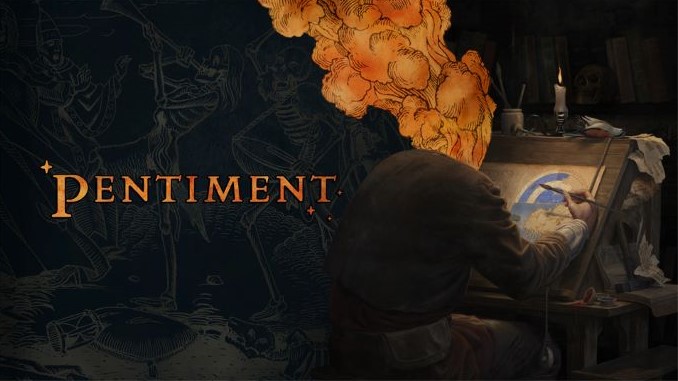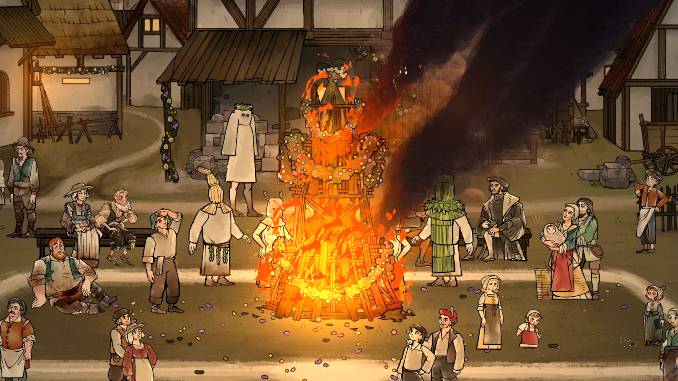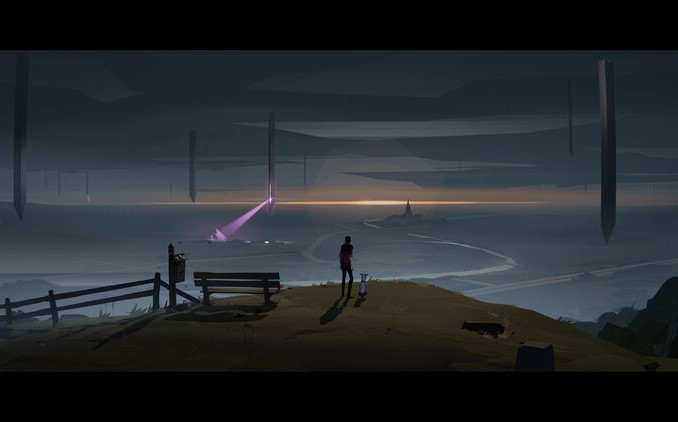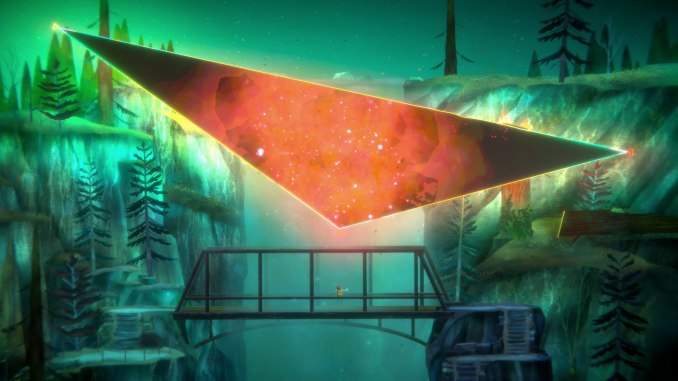
The way a game looks is just as important as having a solid set of mechanics. In fact, I’d argue that games with strong visual direction play better than games without it. When a game has a strong aesthetic, whether that’s the styling of its environments or the idiosyncratic animations of its characters, it goes a long way towards suspending the player’s disbelief and giving them an almost embodied sense of how the physics and rules of that world work. Not to mention how the right atmosphere can influence how player’s interact with a game. Of course, there are games that are all style no substance, but I’d like to focus on five upcoming titles (in no particular order of preference) that are strong contenders for striking that critical balance between those two pillars of game design.
Dordogne

Ever since Wholesome Game’s announcement trailer 2 years ago, I’ve been eagerly awaiting any and all updates regarding this bittersweet title. Dordogne is about Mimi, a 32-year-old woman revisiting the home of her recently deceased grandmother who left her letters and puzzles to solve. As a child in 1982, she spent a lot of time with said grandmother in the eponymous region of France, and as the steam description for the game describes, the game is about Mimi reconnecting “with the little girl who marveled at everything.” The game features gorgeous animation which is created using Cannes award-winning art director Cedric Babouche’s 150+ watercolor paintings and emphasizes the wistful and precious nature of Mimi’s childhood memories. Since the majority of the game is Mimi exploring and documenting her favorite sights, sounds, and plantlife of Dordogne via polaroid camera, a tape recorder, and a scrapbook, the style of this game encourages the player to do just that—capture as much of their beauteous surroundings for souvenirs.
Pentiment

The best way I can describe Pentiment’s visual style and the tone it evokes is The Secret of Kells by way of Name of the Rose and Pillars of the Earth. Very fitting for a narrative adventure game focused on a 16th century Bavarian painter embroiled in murder mysteries and scandals. Obsidian’s senior design director Josh Sawyer explains in a developer overview by IGN that the game’s title refers to “paintings in which there is an older painting underneath” hinting at what can be discovered if one scrapes away the top layer. He was inspired by seeing other narrative-driven games with distinctive art styles and wanted to make a game which was set in the early modern period and reflected the art of that period. What’s brilliant about this concept is that it portrays the world through the eyes of the painter protagonist Andreas. The graphics reflect the sensibility a painter like him would possess at a Benedictine abbey, with somewhat stiff and iconic figures, although those figures move in a lively and fluid manner. Sawyer explains that art director Hannah Kennedy blended together late medieval manuscripts with early modern woodcuts to get the unique style of Pentiment. Sawyer and Kennedy’s aim is to have the art style hint at the themes of history being covered and uncovered over the course of 25 years in one community. (Read Grace Benfell’s preview of Pentiment from August.)
Sommerville

The first game from former Playdead Games co-founder Dino Patti and animator Chris Olsen (who formed the new studio Jumpship) unsurprisingly makes this list. Similar to Limbo, and especially Inside, Patti and Olsen’s influences are decidedly cinematic and focus on grand scale and vast panoramic takes of the environment. The family featured in the trailers caught up in the midst of an alien invasion and conflict are at times tiny specks in comparison, which not only heightens the tension of the scenario but gives the player an immediate sense of their seemingly helpless plight. As usual, the player character, who appears to be the father of the family, has very minimal controls and is often on the run from antagonistic forces. Unlike previous titles Patti is known for, however, Sommerville seems to be focused not on hopelessness, but the solace and intimacy we find in each other during larger-than-life events. Several scenes from all of the trailers released so far are also beautiful in a desolate way (like the abandoned ruins of a daycare, or the family slumped against each other on a couch spotlit by a TV set). The game’s atmosphere is characterized by the sort of desaturated and misty locales familiar to us from Inside and titles like Kentucky Route Zero that treat environments like well-set tableaus, but with more frequent pops of vibrant primary or analogous colors.
The closest thing I can compare my impression of Sommerville’s effortless atmosphere to is that of Gareth Edwards’ 2010 film Monsters, which also focuses on themes of being everyday people caught up in an ongoing extraterrestrial crisis.
Oxenfree II: Lost Signals

While Pentiment and Dordogne’s styles are focused on capturing a tactile and painterly depiction of their game worlds, the sequel to Night School Studio’s cult classic has a good grasp on illustrating the mindfuckery of Camena Coast’s supernatural events by mixing lead artist Heather Gross’ picturesque 2.5 style with digital media effects. Lost Signals is smart for bringing back the same techniques such as cutting to TV color bars as well as stretching and warping the game screen with feedback and static that, well, signal to the player that something is amiss with everyone’s perceptions. There will be more scrolling of radio signals to access time loops and otherworldly communications too. Studio director Sean Krankel has mentioned that Lost Signals’ secrecy will be conveyed to the player in a “hidden in plain sight manner” with things like military ciphers and the lunar phase inspired symbology of Camena’s cult called Parentage.
Psychroma

Psychroma is a darkly psychedelic cyberpunk side-scroller about being a digital medium trying to confront their past and “exorcize the ghosts in the machine” of a cybernetic house. The nonlinear gameplay explicitly seeks to make the style of its animations integral to Psychroma’s progression, as you will interact with the house’s environment, get possessed by ghostly npcs, and even time via a “cybernetic tarot system”. Rocket Adrift is also a studio comprised of game designers who started out as fellow students at Seneca College’s Independent Illustration Program and they are artists first and foremost, using the assets of a game to really drive their ludonarrative experience home. Rocket Adrift keeps a detailed devlog of their production and details how and why they chose a mix of pixel and glitch art to maximize the amount of animations and mechanics they could fit into the game loop. I’m impressed by Psychroma’s stylistic departure from the team’s previous two games as well, both of which sported ‘90s-inspired visual novel sprites and vibrant color palettes. While there are still some recognizable neon hues, most of the palette skews towards cooler tones this time around and there’s more experimentation with lighting and high contrast to suffuse everything with a spooky atmosphere. Having followed Rocket Adrift’s work for years now, I can safely say this is a game I have full confidence in regarding the balance of art and gameplay.
Honorary Mentions: Snufkin: Melody of Moominvalley and Bombrush Cyberfunk
Phoenix Simms is an Atlantic Canadian writer and indie game narrative designer. You can find her work at Unwinnable, Videodame, Third Person, and her portfolio. Her stream-of-consciousness can be found at @phoenixsimms.